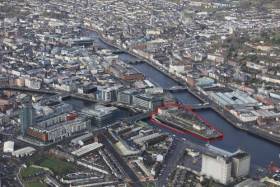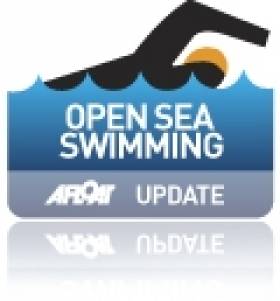Displaying items by tag: Custom House Quay
Petition to Lord Mayor to Protect Historic Buildings at Port of Cork Site
#WaterfrontProperty - Calls for the protection of historic buildings at the Port of Cork that secured in a petition more than 1,500 signatures has been presented to the Lord Mayor of Cork city.
The Port of Cork site reports the Evening Echo was purchased by New York-based Irish developers, Kevin and Donal O’Sullivan, who have plans for a €100m development, including a 40-storey skyscraper.
For further reading, click here.
Planners Meet With Potential Buyers of Port of Cork Buildings
#PortBuildings - Des Cahill the Lord Mayor of Cork has said Council planners have met with potential buyers for the historic Port of Cork buildings on Custom House Quay.
The site writes the Evening Echo, includes the Custom House and adjoining bonded warehouses was listed for sale by the Port of Cork with agents DTZ Sherry Fitzgerald last year.
The agents told the Evening Echo yesterday that the identity of the potential buyers was confidential.
The site comprises of 2.9 acres which the agents say has “substantial development potential, suitable for a range of uses subject to planning permission.”
Meanwhile, the well-known Cork artist, John Adams, has said he is prepared to take to the streets to gain more signatures for his petition to get the historic buildings back into public ownership.
For more on the city-centre waterfront property click here.
It is only in recent years that larger vessels can berth at this stretch of the waterfront following the completion of several major construction projects over the last decade. From the building of the Convention Centre and the Samuel Beckett Bridge which involved using the dredger Hebble Sand (click HERE) during its construction process.
In addition the refurbishment of Spencer Dock sea-lock entrance that for many years was closed is now re-opened. The dock entrance featured in the start of the new television series 'Waterways'-The Royal Canal. Episode two is this Sunday on RTE 1 at 8.30pm.
Aside the 79m L.E. Roisin, the last large vessel to berth close to berth 16A was the French 58m tallship Belem, which was chartered by Alliance Francaise to celebrate their 50th anniversary in 2010 and for the inaugural French Hoist the Sail: Market Festival. The three-masted barque built in 1896 was once also owned by the Sir Arthur Ernest Guinness under the name of Fantôme II.
Situated between where L.E. Roisin is currently berthed and where the Belem had moored, is home to the 'resident' M.V. Cill Airne, a floating bar and restaurant dining venue at berth 16B. Another resident is the former lightship Kittiwake at berth 17B, though sited much further downstream at the end of North Wall Quay, opposite the O2 Arena and next to the East-Link Bridge.
There is a fourth resident, again berthed on the north quays, though the Jeanie Johnston unlike her counterparts is moored closer to the city-centre at Custom House Quay. Apart from yachts, leisure-craft and occasional private motor-yachts using the Dublin City Moorings, she is the only vessel to permanently occupy a berth between Samuel Beckett Bridge and the Sean O'Casey foot-bridge.
- inland waterways
- Dublin Port
- Dublin Docklands
- Royal Canal
- Jeanie Johnston
- naval service
- Custom House Quay
- Alliance Française
- Spencer Dock
- Sean O'Casey Bridge
- River Liffey
- Belem
- Sir John Rogersons Quay
- TallShips
- North Wall Quay
- Fantome II
- Dick Warner
- Dublin City Moorings
- Navy News
- O2 Arena
- EastLink bridge
- LE Roisin
- Sir Arthur Guinness
- National Convention Centre Dublin
- Samual Beckett Bridge
Up to 300 Expected for Annual Liffey Swim
The Men's Race starts at 1.30pm and the Women's Race starts at 2.15pm. Every year over 200 men and 80 women enter the race which passes the Four Courts, the Ha'penny Bridge and many other famous Dublin landmarks.
This unique event has been attracting thousands of spectators for over 90 years and everyone is invited to come and support on the day.
Entries for the race are now closed. All competitors have to finish four of Swim Ireland's 'open water' swimming events.



























































